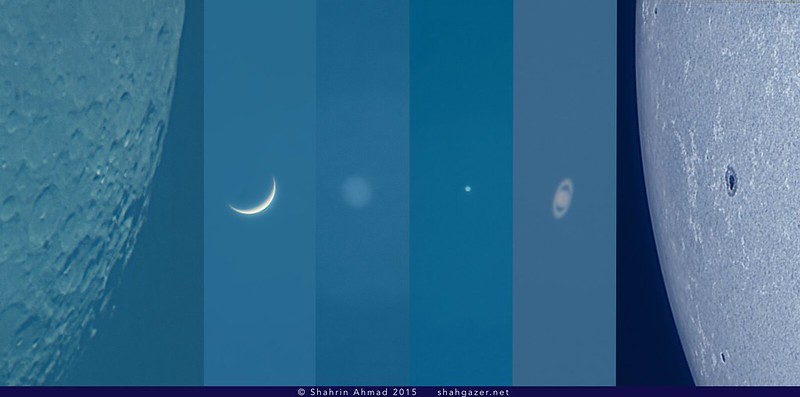It’s one of the stranger observations in ancient literature, and one of the earliest recorded tales of daytime astronomy.
A curious account comes to us from the 1st century AD Roman scholar Pliny the Elder, concerning the exploits of Greek philosopher Thales of Miletus, who notes that:
“The Sun’s radiance makes the fix’d stars invisible in the daytime, although they are shining as much as in the night, which becomes manifest at a solar eclipse and also when the star is reflected in a very deep well.”
This is a wordy way of saying that, looking up from the bottom (or down) a deep well in the daytime (assuming it’s a clear day), one might see stars.
Of course, you could interpret Pliny’s assertion of early daytime astronomy multiple ways, one of which is, “if you look up after falling in a deep well, you’ll see stars,” either real or imaginary.
But did you know: there may just be some truth to this ancient tale. Astronomy need not solely be pursued from sunset ‘til sunrise. If you know exactly where to look and have a little skill, patience, and a good, deep blue sky, you too can indeed practice daytime astronomy and see bright planets (and even select stars) in the broad daylight.
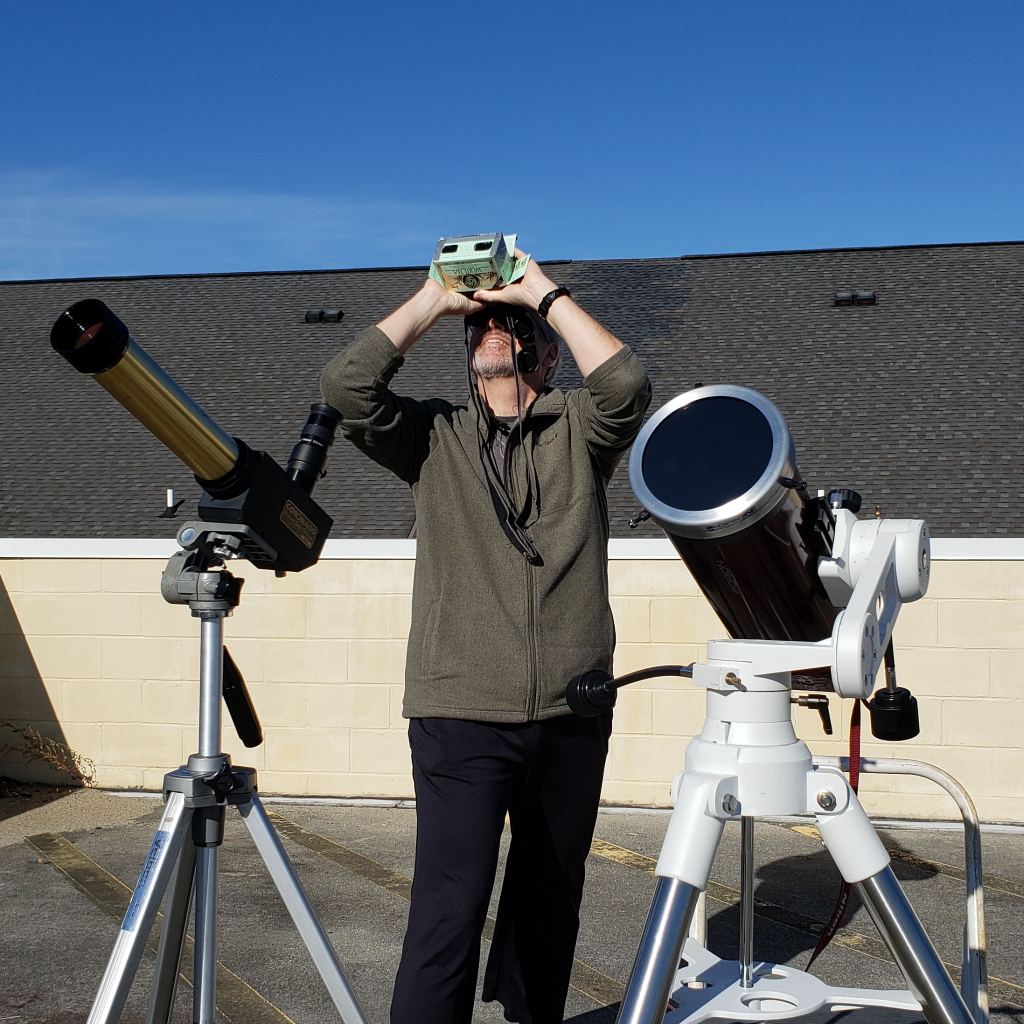
What can you see in the daytime? Of course, solar astronomy is a purely daytime pursuit by definition, and one that does not suffer from light pollution. Our Sun dominates the daytime sky shining at magnitude -26, and is far and away the brightest object in the sky. Our Sun is a star, the only one we have to examine up close and personal. Though the Sun seems tremendous from our Earthly vantage point, it is, in fact, a miserly G-type yellow dwarf star. Our Sun is larger than a majority of the stars in our Universe—those faint red dwarf stars that dot the galaxy—but it’s also far smaller than most of the stars you’ll see in the night sky. Place our Sun 10 parsecs away, for example, and it would shine at a barely perceptible magnitude +4.8. Think about this: just about every star you see in the night sky is larger and more luminous than our Sun… and the largest population of stars in the Universe (said red dwarfs) aren’t visible to the naked eye, as there isn’t one close enough to the Earth in the current epoch to break the +6th magnitude naked eye threshold.
Here’s a fine neighborhood experiment to try. Next time the Moon is around First or Last Quarter, show your neighbors or passers-by on the street its pale silver half-disk hanging in the cool blue sky. Did they even know that the Moon can be seen in broad daylight? Perhaps not, but did you know that with a little practice, you can see many of the naked eye planets as the Moon passes near them as well? Any given lunation offers several opportunities to perform this curious feat of ‘astro- athletics,’ using the handily visible Moon as a guide for contrast and depth of focus against the blue sky: the only equipment required are a working pair of ‘Mk-1 eyeballs,’ perhaps a decent set of binoculars, and patience.
To stack the odds in your favor, a sharp, deep blue sky offers your best chances of success. Observing from a higher elevation, if available, will also help. To check the sky transparency and seeing, first block the Sun out from view with a building or a flag pole. Does the sky look a washed out white, or does it appear solid blue, almost right down to a few degrees from the solar disk and the local horizon? If so, you’ve got good transparent skies for daytime planet spotting. Using a variable polarizing filter, polarized sunglasses, and binoculars can also help in your quest.
So, what can you see? First up and easiest to spy is the brilliant -4th magnitude world Venus. A nearby crescent Moon can provide a good focusing point for your eyes against the featureless blue sky. Blocking out the Sun (A MUST if you are sweeping the sky with binocs!) behind an obstruction such as a hill or building is paramount. Once you get a glimpse of Venus in the daytime, you’ll be amazed at how simple this feat is. I watched the Moon occult Venus in the daytime from our camp on the shores of Saint Froid Lake in northern Maine in 2007, and I also actually managed to catch Venus pass through inferior conjunction while observing from Alaska in 1998! This is possible because the orbit of Venus is tilted 3.4° degrees relative to the ecliptic. When maximum tilt occurs near inferior conjunction, the razor thin crescent of Venus is just visible 3 degrees above the horizon at sunrise.
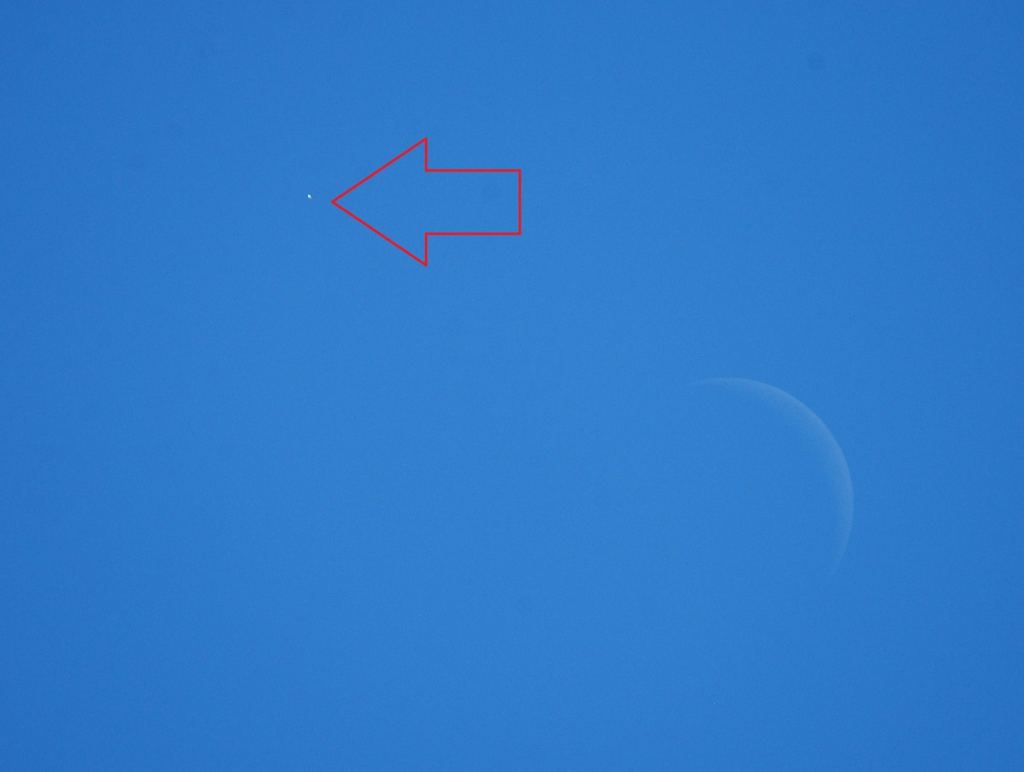
Similar daytime conjunctions of the Moon and Venus may well have been the source of medieval pre-telescopic accounts of ‘strange lights near the Moon’ such as the sighting that occurred on January 13, 1589, over the town of Saint-Denis, France.
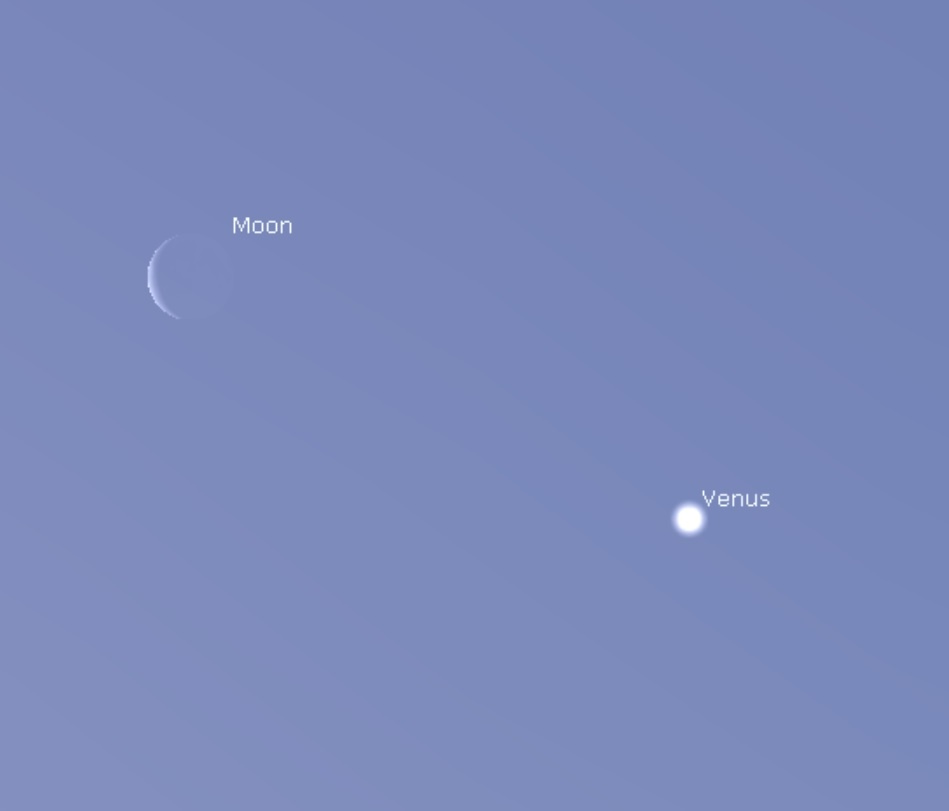
Next up in order of difficulty is the giant planet Jupiter. Jupiter can reach a maximum magnitude of -2.0 near opposition, and this world isn’t at all difficult to nab in the daytime with binoculars, if you know exactly where to look for it in the sky. For contrast, the apparent diameter of the Moon is about 0.5 degrees (30 arcminutes) across, versus Jupiter’s 50” diameter (1/36th of the Moon’s size) near opposition. Once you’ve located ghostly daytime Jupiter with binoculars, try finding it with the unaided eye. Cupping your hands around your eyes or using a “1x finder” such as an empty toilet paper tube (!) can help create that “looking up from a well” effect first noted by Thales in the curious endeavor of daytime planet hunting. I once managed to catch Jupiter near opposition from the arm-end-of-runway at Al Jaber Air Base in Kuwait in 1998, first by noting the planet’s position in relation to a flagpole after sunset, then scanning the horizon for it on the next evening 10 minutes prior to sunset.
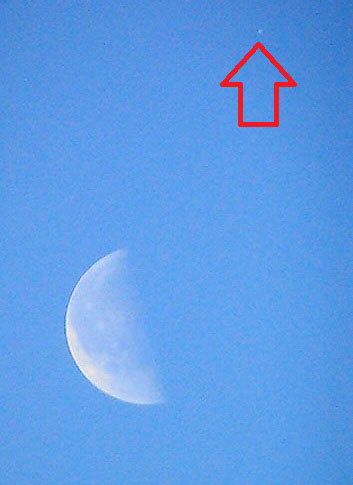
Climbing down the magnitude scale, it is just possible to nab Mars in the daytime… under the right conditions. I successfully accomplished this during the outstanding 2003 opposition of the Red Planet observing from Vail, Arizona when the waxing gibbous Moon lay near -2.7 magnitude Mars, just 10 minutes before local sunset.
We were also recently able to actually follow Mars with the unaided eye up into the daytime sky while observing from our apartment’s parking garage rooftop in downtown, Norfolk, Virginia. Mars reaches a favorable opposition next month on the night of October 13th, 2020, and the waning gibbous Moon (just off of Full on October 1st) passes very near the Red Planet on the night of October 2nd/3rd, providing an excellent opportunity to follow -2.5 magnitude Mars up into the daytime sky, shortly after sunrise.
And finally, the ultimate daytime astronomy planetary challenge: sighting the planet Mercury in daytime skies. Mercury, you say? Isn’t that tough enough to see at dusk or dawn? Veteran skywatcher Stephen O’Meara notes in his December 2005 Sky & Telescope column that this feat may just be possible near greatest elongation. Maximum possible separation for Mercury from the Sun is 28 degrees, and one should try to sweep the daytime sky for the innermost world during local solar transit across the meridian, near greatest elongation when the planet lies farthest east or west of the Sun. Apparitions of Mercury vary greatly because of its elliptical orbit, which is the most eccentric of the planets in our solar system. Again, physically blocking out the Sun for such a feat is mandatory; you don’t want to catch a blinding glimpse of the Sun in your optics, not even for a second. Positioning a building or hill between yourself and the Sun is your best bet: just remember that the rising Sun will eventually clear those structures!
Watch the daytime sky for longer spans of time, and still stranger sights may be seen. The Moon can occult four +1 magnitude stars (Aldebaran, Antares, Spica and Regulus) in our current epoch, and these can all be seen near the lunar limb with binoculars just before or after the Moon covers them up. This first magnitude cutoff also puts 16 stars within reach under pristine daytime skies:
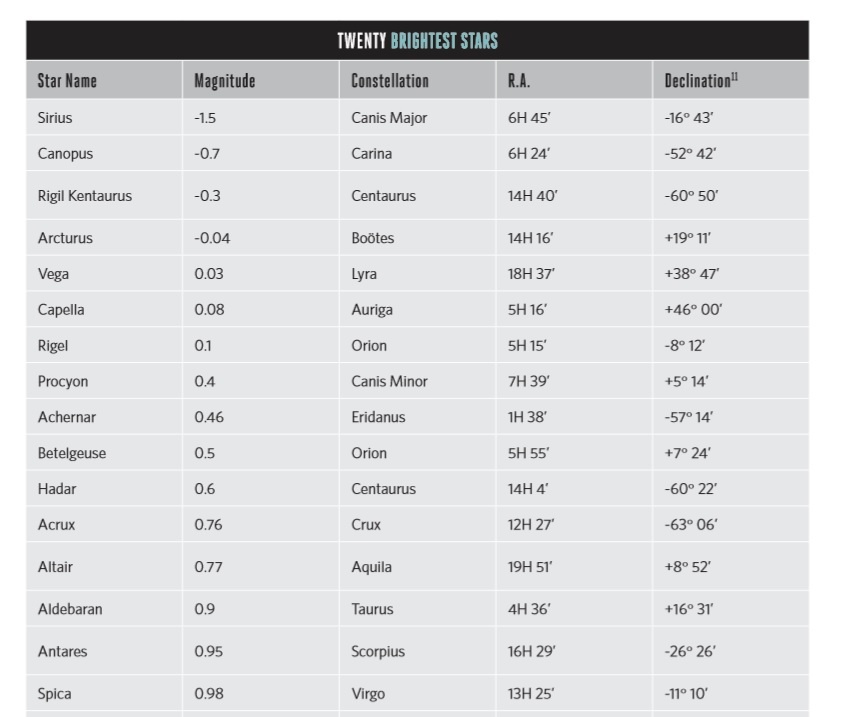
Brilliant meteors and bolides may make themselves briefly known, such as the famous 1972 Great Daytime Fireball caught on video skipping off the Earth’s atmosphere. Very occasionally, a brilliant daytime comet can make itself known during its perihelion passage, such as the Great Comet of 1910 that preceded Halley’s Comet by just a few months. Of course, you’ll have to wait for nightfall for other strange phenomena such as aurora, unless you’re John Wayne in the 1960 movie North to Alaska…
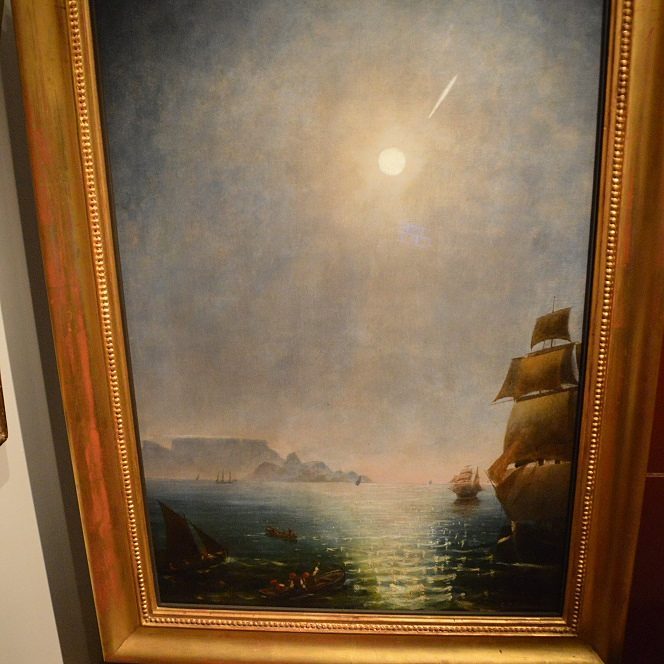
Why bother with these feats of faintness? Well, this shows the limits of what the human eye is capable of. I’ve even shown planets to folks during star-parties hours before the Sun has set, allowing the telescope to track them into dusk and kicking off the party early. Also, these types of sightings demonstrate just what some of those curiosities and unexplained aerial phenomena seen in the daytime skies by peoples of yore might have been… now, if you see a flaming sword or an inscribed banner emblazoned in Latin crossing the sky, that’s another matter altogether.
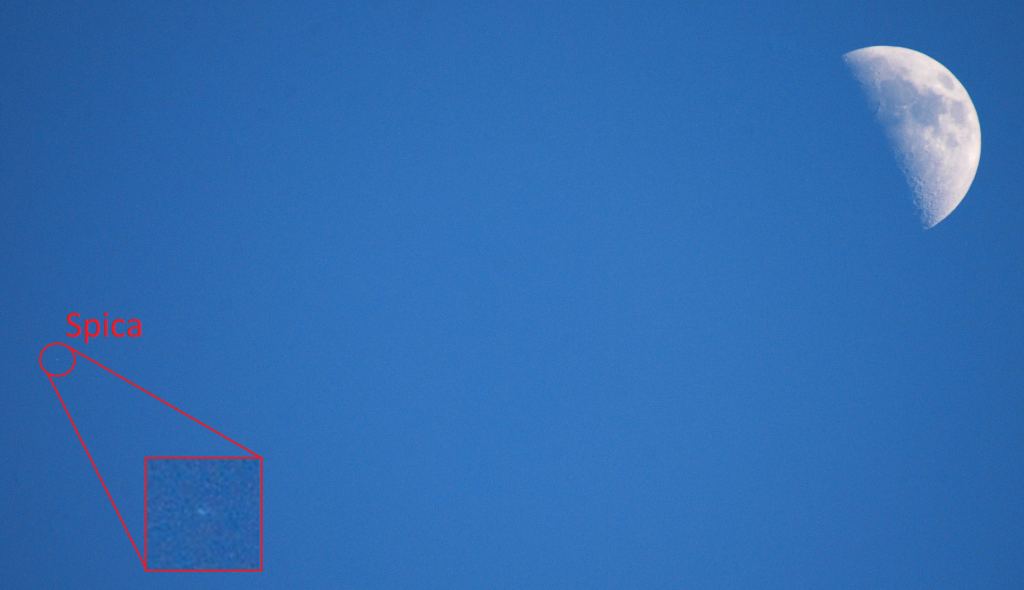
You can be thankful we live in an epoch with interesting skies. A star like our Sun will shine for about 10 billion years, and we’re about halfway through that stellar lifespan now. Those feeble red dwarfs, though, will burn on for trillions of years, as will the dying ember of a white dwarf that our Sun will one day become. When there are no longer enough lighter elements to cause larger main sequence stars to shine, the skies of Earth will be rather dull, dominated by whatever dim planets survived the Sun’s Red Giant phase, reflecting the feeble ancient light and a single, solitary white dwarf star. Our daytime sky will look significantly different then.

But thankfully, those days are a long ways off. Let us hear of your tales of daytime astronomy: such feats represent the cutting edge of visual athletics!
-Lead image credit: A portrait of daytime astronomical objects: (from left) the Moon, Venus, Jupiter, Mercury, Saturn and the Sun. Image credit and copyright: Shahrin Ahmad.

